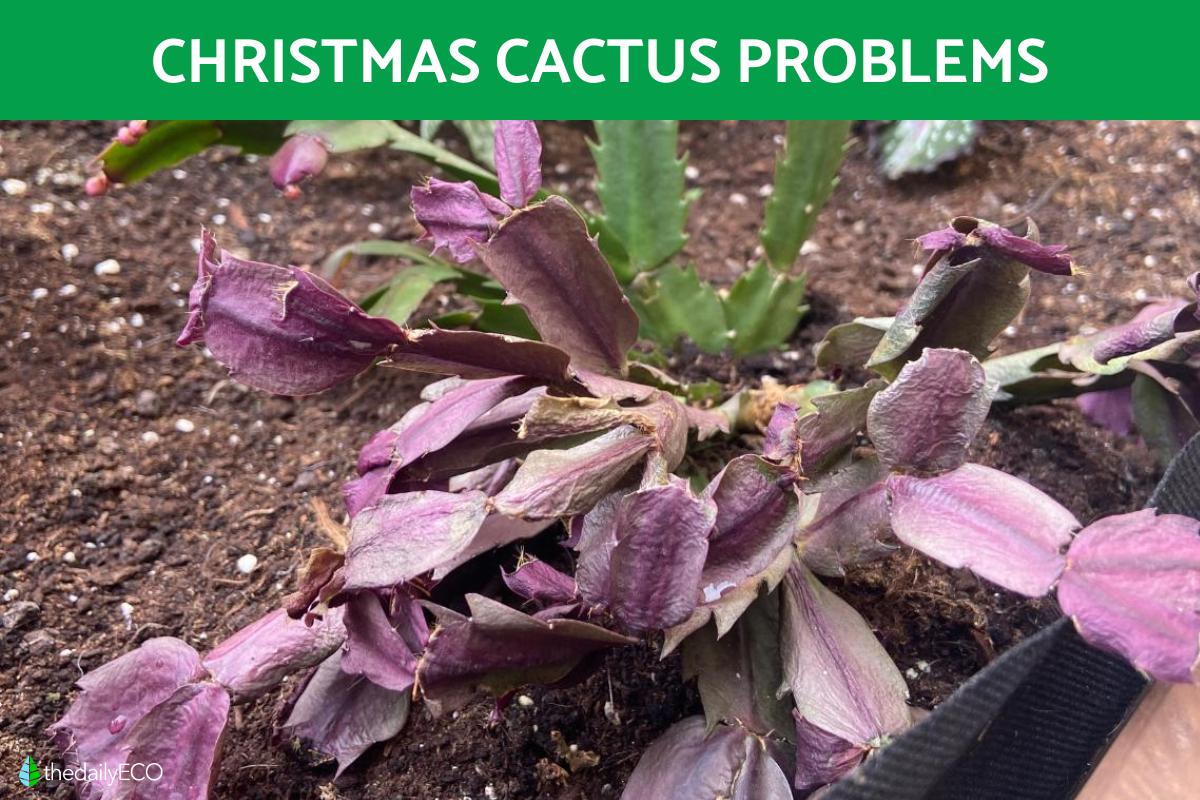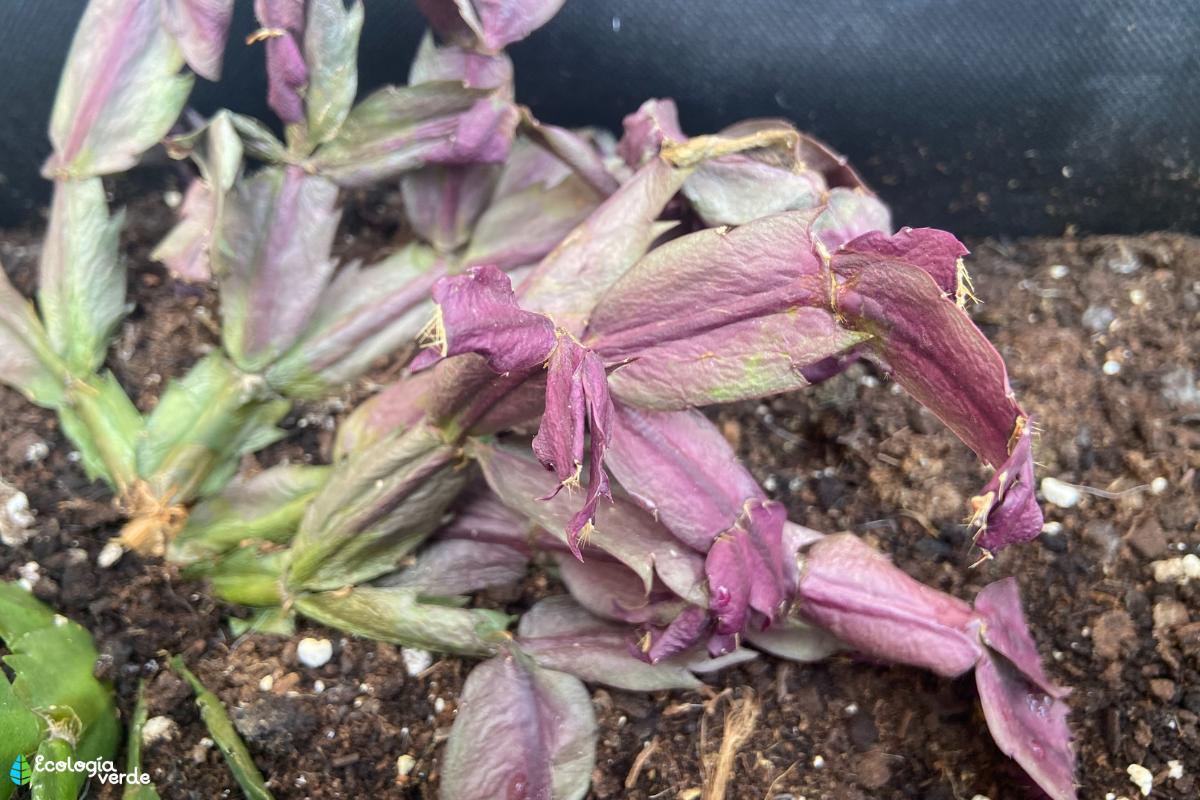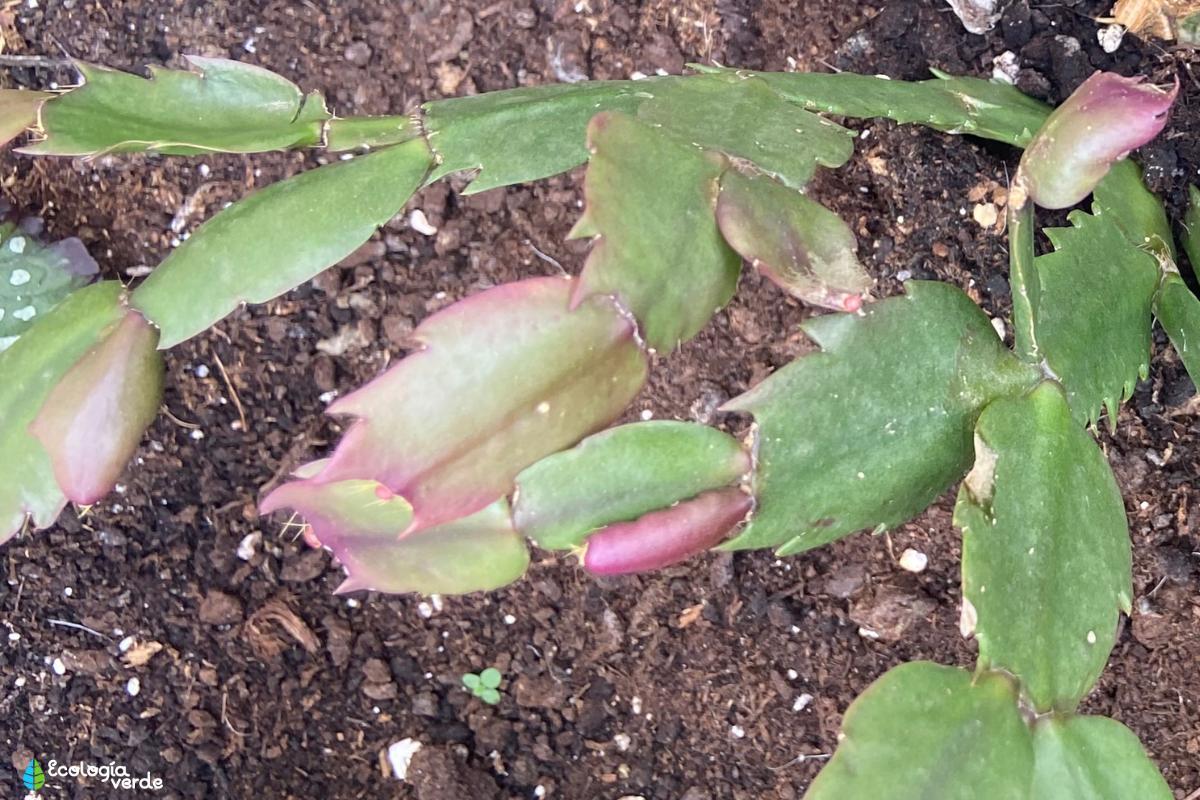Christmas Cactus Problems - Causes and Treatment


From the genus Schlumbergera, there are various species plants known as Christmas cactus which have very similar properties and characteristics. Also known as crab cactus or holiday cactus, these plants are succulents which can be affected by various problems affecting their development and even killing the plant in many cases. These problems can manifest in various symptoms such as wrinkled leaves, yellow leaves, black spots developing or even poor growth. When they do grow properly, Christmas cacti should bloom in flowers which can be pink, red, orange or white. They do so in autumn and winter, the reason for their common name.
Although they are succulent plants that retain water and are relatively easy to care for, they can suffer from problems like any living organism. thedailyECO explains what are the most common Christmas cactus problems, as well as their causes, symptoms and treatment.
Christmas cactus with wrinkled leaves
The cause of wrinkled leaves on Schlumbergera is dehydration. It is very common for one to be overconfident when watering these low-maintenance plants. This is because they store water and can do goa relatively long period without further irrigation. This does not mean they don't need watering at all. If they do not get their minimum water requirements their leaves will wrinkle.
To recover your Christmas cactus from severe dehydration, water thoroughly until water runs out of the holes at the bottom of the planter. In subsequent days you should increase the amount of watering, but do not saturate the substrate. Later in this article, we will tell you how to identify excessive watering in your plant.
Take a look at our related article to learn about types of small cactus to be kept in pots. You can also purchase your own Christmas cactus using the link below:
Christmas cactus with purple leaves
When the leaves of a Christmas cactus turn purple, it is often also accompanied by wrinkled leaves. It is also a result of excessive dehydration, but is also a result of prolonged direct sun exposure. The plant produces this color as a defense method against the sun and lack of water, producing pigments called carotenoids that serve as sunscreen to prevent burns. Although it can be aesthetically pleasing, it is an indicator of stress, so you should move your plant to a place with less direct sun and water it more for a few days.

Christmas cactus with yellow leaves
Excessive sun causes stems in this species to lose color, turning yellow or even white. If it continues to be excessive for a long time, this is when the above purple coloration will develop. Excess light also causes flower buds to drop, another reason why you have to pay attention to excess light.
This plant grows in its natural environment under the canopy of trees between the trunks and not directly on the ground. For this reason it is adapted to shelter and partial shade, not direct light. It is recommended to keep it indoors or indoors near a window. Excessive light causes the leaves to burn and dehydrate faster. In this case, you need to take it to a place where it receives less light so that it can stabilize again.
Learn about other plants which are best in partial shade with our related article.

Christmas cactus with soft leaves
When we have a Christmas cactus with very watery leaves that almost fall apart when touched, it is a sign of excessive watering or a substrate that has poor drainage. This plant requires low watering, since the leaves store reserve water within them. If the watering is exceeded, the leaves will begin to contain too much water. It is this which causes them to be soft and mushy, eventually disintegrating.
Remember that indoor plants have less water evaporation, so watering should be spaced out even more than outdoors. The frequency of watering will depend on the particular conditions of where you have your Christmas cactus, but the appropriate watering is determined by the substrate. It is best to ensure that it dries sufficiently between waterings.
If the substrate is not prepared with a good proportion of draining material, this will lead to a large amount of water being retained. The ideal substrate mix for a Schlumbergera is orchid substrate, made from tree bark and coconut fiber and mixed with an equal part of leaf mulch. Another option is to mix 30% worm castings and 70% sandy soil.
You can find out how to make your own worm castings at home with our helpful step-by-step guide.
Christmas cactus with black leaves
This is another symptom of overwatering, happening due to a disease called crown rot. It occurs when the water applied is too abundant, causing root rot and affecting the tissues of different parts of the plant.
In Schlumbergera this usually manifests itself as a necrotic stem, evidenced by it turning black. At this point there is no solution and the plant will die. To avoid it, you have to make sure to provide a suitable substrate with good drainage before planting the cactus. You will also need to avoid overwatering. If your plant does not yet have a black stem, you can remove the black leaves, improve the substrate and reduce watering.
Cottony mealybugs on Christmas cactus
Since these plants are indoor or partial-shade plants, they are often plagued by mealybugs that thrive in these types of sheltered environments. They are observed as small white waxy mounds in hidden parts of the plants, such as the axillary buds which are at the base of the flowers or even between the substrate. These insects suck the sap from the Schlumbergera plants, weakening them and leaving discolored spots on the leaves. In addition, they leave a sugary secretion on the plant which is a medium for fungi to proliferate.
To solve this pest, all dead parts of the plant must be removed to reduce the area to colonize. In addition, those stems that are densely infested should be cut. Certain numbers of mealybugs can be tolerated, but they can grow too quickly. There are those who prefer to use pesticides, but it is advisable to avoid them because they destabilize the microecosystems of our garden. A good alternative is neem oil which can be sprayed once a week on the affected plant to kill mealybugs.
You can learn more about mealybugs and fungal infections in plants with our article on the causes and treatment of black spots on the leaves of a plant.

Christmas cactus with little growth
You may notice that during the winter months the plant reduces its growth and that the leaves look more opaque. This is because your Christmas cactus has begun its winter rest phase. It needs to go through low temperatures between 15 to 20 ºC (29 to 68 ºF) to stimulate the growth of its flowers. This is not a negative process, so don't worry if you notice changes at the end of the year. It is simply announcing that the plant will flower soon.
In this phase it is counterproductive if you overwater or apply fertilizer to improve it, so avoid these actions. If you do so, you may slow or even halt the flowering of the plant. If you live somewhere above 20 ºC/68 ºF in autumn, you can find a cooler spot at home so your plant can have showy flowers by the end of the year.
Now you know the problems faced by the Christmas cactus plant, as well as their causes and symptoms you may want to know about caring for other succulent plants. You can do this with our articles on caring for a Shrek ears plant and caring for a topsy turvy succulent plant.
If you want to read similar articles to Christmas Cactus Problems - Causes and Treatment, we recommend you visit our Plant care and cultivation category.
- Royal Horticultural Garden. (n.d.). Schlumbergera truncata common winter cactus. Retrieved from: https://www.rhs.org.uk/plants/141323/schlumbergera-truncata/details
- Font Barris, J. (2022). Cactus and other succulent plants. Spain: Larousse.








